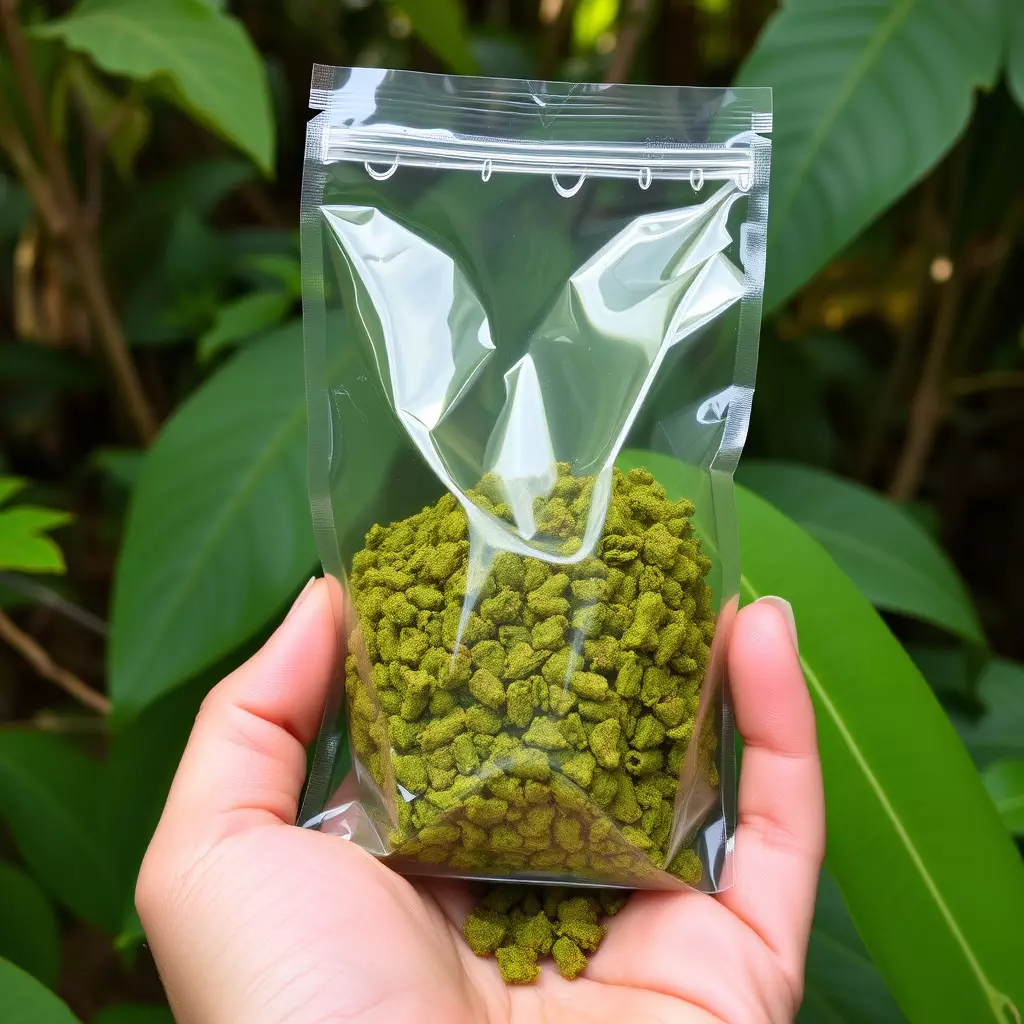Kratom, a plant-based substance from Southeast Asia, is under scientific investigation for its potential role in emotional regulation. Its effects stem from active compounds like mitragynine and 7-hydroxymitragynine, which influence brain opioid receptors and neurotransmitters such as serotonin and dopamine. Users often report that kratom helps stabilize their emotions, with certain strains like Bali and Indo known for their calming effects. However, it's important to approach kratom with caution due to its variable outcomes based on dose, strain, and individual response. Emotional regulation through kratom shows promise but requires informed use and professional consultation to ensure safety and effectiveness. It's crucial to understand both the potential benefits and risks associated with kratom, considering that chronic use can lead to tolerance and dependence. Prospective users should consider incorporating kratom into a broader emotional regulation strategy that includes lifestyle adjustments, therapeutic support, and careful monitoring of its impact on their emotional well-being.
Emotional regulation plays a pivotal role in maintaining mental well-being and navigating life’s challenges. This article explores how kratom, a botanical substance, can aid in this process by curbing emotional reactivity. We delve into the intricacies of kratom’s mechanisms for emotional self-management, focusing on its alkaloids and their effects on the brain. Additionally, we provide guidance on dosage, strains, and safety considerations to ensure responsible use of kratom in emotional regulation. Understanding these aspects is crucial for those seeking natural ways to balance their emotions and mitigate reactive behavior.
- Understanding Emotional Regulation: The Role of Kratom in Balancing Emotions and Mitigating Reactive Behavior
- Kratom's Mechanisms for Emotional Self-Management: Alkaloids and Their Impact on the Brain
- Navigating Kratom Use Responsibly: Dosage, Strains, and Safety Considerations in Emotional Regulation
Understanding Emotional Regulation: The Role of Kratom in Balancing Emotions and Mitigating Reactive Behavior

Emotional regulation is a critical aspect of mental health and well-being, and the natural supplement kratom has garnered attention for its potential role in this process. Kratom, derived from the leaves of Mitragyna speciosa, interacts with the brain’s opioid receptors, which can influence mood and emotional responses. Users often report that kratom helps to balance their emotions, providing a sense of calm and clarity that may be beneficial for those experiencing heightened emotional states or reactivity. By modulating neurotransmitter systems such as serotonin and dopamine, kratom can contribute to a more stable emotional state, potentially reducing the propensity for reactive behavior in response to stressors or triggers.
Research into the efficacy of kratom for emotional regulation is ongoing, with some studies suggesting that specific strains of kratom may be particularly effective in mitigating reactivity. For instance, strains such as Bali or Indo are often cited for their relaxing and calming effects, which could be beneficial for individuals looking to manage emotions more effectively. However, it is important to approach the use of kratom with caution, as the substance can have varying effects based on dose, strain, and individual physiology. Users should be informed of the potential benefits and risks associated with kratom use, and it is advisable to consult healthcare professionals before incorporating kratom into any emotional regulation strategy. Emotional regulation with kratom may offer a natural approach for some individuals, but personalized and professional guidance is key to ensuring safe and effective use.
Kratom's Mechanisms for Emotional Self-Management: Alkaloids and Their Impact on the Brain

Kratom, a tropical evergreen tree native to Southeast Asia, has been traditionally used for its medicinal properties and more recently has garnered attention for its potential role in emotional regulation. The mechanisms by which kratom exerts its effects on emotional self-management are primarily attributed to its alkaloid profile. Mitragynine and 7-hydroxymitragynine, two of the most abundant and bioactive alkaloids found in kratom leaves, interact with various neurotransmitter systems within the brain. These interactions can influence mood and emotional reactivity.
Mitragynine and 7-hydroxymitragynine engage with opioid receptors in the brain, particularly the mu-opioid receptor, which is known to be involved in pain perception and emotional processing. This engagement can lead to a modulation of the body’s stress response, as evidenced by the reduction in cortisol levels—a hormone associated with stress. Additionally, kratom alkaloids may enhance the release of neurotransmitters such as dopamine and serotonin, which are pivotal in regulating mood and emotional well-being. By promoting a balanced state within these neurotransmitter systems, kratom can help individuals manage their emotions more effectively, potentially leading to reduced emotional reactivity and a greater capacity for emotional regulation. Users often report a sense of calm and well-being when consuming kratom, which supports the notion that it may be beneficial for those seeking natural ways to regulate their emotions.
Navigating Kratom Use Responsibly: Dosage, Strains, and Safety Considerations in Emotional Regulation

Kratom, a plant native to Southeast Asia, has gained attention for its potential role in emotional regulation due to its interaction with the brain’s opioid receptors. When considering kratom use for emotional regulation, it is paramount to approach its consumption responsibly. Users should be well-informed about appropriate dosage to avoid overconsumption, which can lead to adverse effects. The optimal dosage can vary based on individual sensitivity and the strain of kratom used, with red vein strains typically associated with calming effects and white or green vein strains often linked to more energizing and mood-elevating properties.
Safety considerations are crucial when incorporating kratom into one’s routine for emotional regulation. It is essential to start with a low dose and carefully monitor its effects before adjusting the dosage. Additionally, users should be aware of potential interactions with other substances or medications and consult with a healthcare provider to ensure safety and efficacy. Regular use of kratom can lead to tolerance and dependence, thus it is important to adhere to recommended guidelines and exercise caution to maintain its benefits for emotional well-being without risking addiction or negative health outcomes. Emotional regulation with kratom should be pursued with a holistic approach that includes lifestyle modifications, therapeutic support, and a thorough understanding of the substance’s effects and limitations.
Emotional regulation through the use of kratom can offer a pathway for individuals seeking to manage and mitigate reactive behaviors. By elucidating the mechanisms behind kratom’s effects on the brain, primarily through its alkaloid content, this article has underscored the potential benefits of this approach. However, it is imperative to approach kratom use with caution, considering appropriate dosage and strain selection for safe and effective emotional self-management. Incorporating responsible kratom use into one’s wellness routine may contribute significantly to balanced emotional states, warranting further research into its role in emotional regulation.






